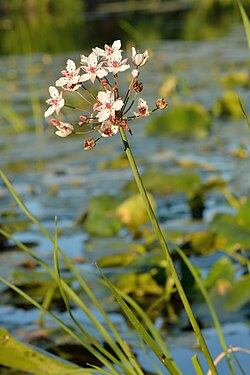| Flowering rush | |
|---|---|
 | |
| Butomus umbellatus | |
| Scientific classification | |
| Kingdom: | Plantae |
| Clade: | Tracheophytes |
| Clade: | Angiosperms |
| Clade: | Monocots |
| Order: | Alismatales |
| Family: | Butomaceae Mirb. [1] |
| Genus: | Butomus L. |
| Type species | |
| Butomus umbellatus | |
| Species | |
See text | |
 | |

Butomus is the only known genus in the plant family Butomaceae, native to Europe and Asia. It is considered invasive in some parts of the United States. [3]